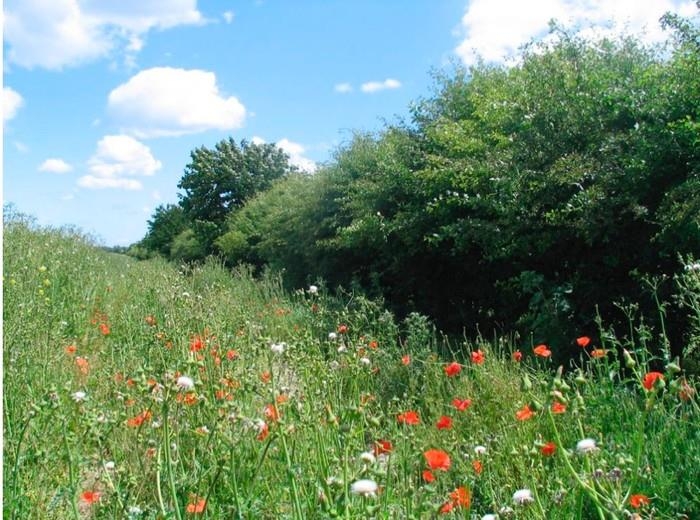
Hedgerows – Nature Notes
Most hedgerows in this (Middleton) area of Suffolk date from the piecemeal enclosure of land before the seventeenth century, with many dating from medieval times. The original purpose of hedges was to provide a stock proof barrier, with an extra benefit of providing sources of wood for building and other countryside trades. Traditionally hedge laying is usually thought of as the main method of management, but often in Suffolk coppicing (cutting to ground level) was practised. When hedges were being coppiced the associated ditch was usually scoured. The soil dug out was dumped on to the adjacent hedge bank; explaining the traditional legal position regarding boundaries, which are deemed to run not along the line of the hedge but along the further side of the ditch.
Today hedges are primarily valued for their scenic qualities and for their roles as habitats for wildlife. In an agricultural landscape hedgerows provide the greatest source of biodiversity; over 2000 insect species alone are associated with hedges. However, a number of issues influence the wildlife value of each hedge. Factors such as, the botanical composition, both of the shrubs which form the hedge and the associated ground flora, the structure of the hedge and associated features, how the hedge connects with others and with other habitat features, as well as the hedgerow management regime. For instance, hawthorn has over 200 associated insect species, whereas holly has only 10 and a mixed species hedge that provides a continuous display of flowers is more important for many bees, wasps and flies than single species hedges. Likewise, hedgerows that form part of a network that connects other habitats such as woods, meadows and streams and hedges that have associated banks, verges and ditches, or have a number of hedgerow trees have greater ecological value.
Management is essential; hedges that are cut regularly can have great wildlife diversity, although other studies have shown that less intensive management, especially of hedgerow bottoms aids diversity. Ideally the hedge should be thick and bushy, an A-shaped hedge provides maximum protection for wildlife, as this type is more beneficial especially to many birds than thin straggly hedges. Hedges should only be cut in winter, ideally in early February. Hedge maintenance should not be done between March and August as birds are nesting, and it is illegal to intentionally damage or destroy the nest of any wild bird. If possible delay maintenance until late autumn, as fruits are valuable food for birds. As fruit is usually borne on last year’s growth it is usually better to cut hedges every other year. Different hedge sizes, types and features are of value to different species, so the best hedges for wildlife have a varied character along their length and will attract a wider range of wildlife.
Peter Vincent
County Recorder – Diptera
This article appeared In the Middleton Newsletter February Nature Notes, 2023 (but written originally for the Fressingfield magazine)

